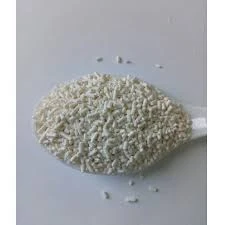
Understanding the Benefits and Uses of Compound Fertilizers in Agriculture and Gardening
Understanding Compound Fertilizers A Comprehensive Overview
Compound fertilizers play a crucial role in modern agriculture, providing essential nutrients that promote plant growth and optimize crop yields. As the global population continues to rise and the demand for food increases, the importance of effective fertilization techniques cannot be overstated. In this article, we delve into the definition, types, advantages, and considerations of using compound fertilizers in agricultural practices.
What Are Compound Fertilizers?
Compound fertilizers, also known as mixed fertilizers, are products that contain two or more essential plant nutrients. They are formulated to deliver a balanced supply of nutrients, which are vital for the development of plants. The primary nutrients included in these fertilizers are nitrogen (N), phosphorus (P), and potassium (K)—commonly referred to as NPK. These nutrients help plants in different growth stages, contributing to root development, flowering, and fruiting.
Compound fertilizers come in various forms, including granules, powders, and liquids, allowing for versatility in application methods. These fertilizers can be further classified into two categories NPK fertilizers, which provide a specific ratio of nitrogen, phosphorus, and potassium, and complex fertilizers, which are produced through chemical processes that create a uniform blend of nutrients.
Types of Compound Fertilizers
1. NPK Fertilizers These are the most common type of compound fertilizers. They come in different formulations, such as 10-10-10, 20-20-20, or any other combination, indicating the percentage composition of nitrogen, phosphorus, and potassium. Farmers can choose the NPK ratio that best suits their crops’ needs and soil nutrient status.
2. Granular Fertilizers Often used for field crops, these fertilizers can be broadcasted or applied in furrows. They typically release nutrients slowly, providing a sustained supply over an extended period. This slow-release characteristic reduces the risk of nutrient leaching and ensures that plants have access to necessary nutrients throughout their growth cycle.
3. Liquid Fertilizers These are usually applied through irrigation systems or directly to the soil. They are easily absorbed by plants, providing a rapid nutrient supply. However, due to their high solubility, there is a greater risk of leaching, which necessitates careful application to avoid environmental contamination.
4. Controlled-Release Fertilizers These advanced formulations are designed to release nutrients at a controlled rate, matching the plants’ uptake needs. This technology minimizes nutrient loss and enhances efficiency, making it an environmentally friendly option for farmers.
compound fertilizer

Advantages of Using Compound Fertilizers
1. Nutrient Efficiency Compound fertilizers provide a balanced nutrient supply, ensuring that plants receive the necessary elements for growth. This efficiency translates to higher crop yields and improved quality.
2. Convenience The use of compound fertilizers simplifies the fertilization process. Instead of applying individual nutrient sources, farmers can apply a single product that meets multiple nutrient requirements.
3. Cost-Effectiveness While the initial investment in compound fertilizers may be higher than single-nutrient fertilizers, the overall cost-effectiveness is notable. Increased yields and improved crop quality can justify the expense, leading to greater profitability for farmers.
4. Soil Health When used appropriately, compound fertilizers can improve soil fertility and structure, promoting a healthier growing environment for future crops.
Considerations for Use
Despite their benefits, several considerations must be taken into account when using compound fertilizers. Over-application can lead to nutrient runoff, which can harm waterways and ecosystems. Therefore, soil testing is advised to determine existing nutrient levels and to tailor fertilizer applications accordingly. Additionally, understanding the specific nutrient needs of different crops and their growth stages will enhance the effectiveness of compound fertilizers.
Conclusion
In conclusion, compound fertilizers are an essential component of modern agriculture, providing a balanced supply of nutrients that significantly enhance plant growth and crop productivity. By understanding the different types, advantages, and considerations surrounding these fertilizers, farmers can make informed decisions that optimize their farming practices and contribute to sustainable agricultural development. Moving forward, the responsible use of compound fertilizers will be key to meeting the increasing demands of global food production while preserving the environment.
-
Pure Sodium Dichloroisocyanurate Dihydrate | Powerful DisinfectantNewsAug.29,2025
-
Industrial Chemicals: Quality & Purity for Every IndustryNewsAug.28,2025
-
Nitrile Rubber Honoring Strict Production StandardsNewsAug.22,2025
-
Aspartame Ingredients Honoring Food Safety ValuesNewsAug.22,2025
-
Fertilizer for Balanced Plant NutritionNewsAug.22,2025
-
Cyanide Gold Processing with High Purity AdditivesNewsAug.22,2025
-
Formic Acid in Textile Dyeing ApplicationsNewsAug.22,2025
Hebei Tenger Chemical Technology Co., Ltd. focuses on the chemical industry and is committed to the export service of chemical raw materials.
-

view more DiethanolisopropanolamineIn the ever-growing field of chemical solutions, diethanolisopropanolamine (DEIPA) stands out as a versatile and important compound. Due to its unique chemical structure and properties, DEIPA is of interest to various industries including construction, personal care, and agriculture. -

view more TriisopropanolamineTriisopropanolamine (TIPA) alkanol amine substance, is a kind of alcohol amine compound with amino and alcohol hydroxyl, and because of its molecules contains both amino and hydroxyl. -

view more Tetramethyl Thiuram DisulfideTetramethyl thiuram disulfide, also known as TMTD, is a white to light-yellow powder with a distinct sulfur-like odor. It is soluble in organic solvents such as benzene, acetone, and ethyl acetate, making it highly versatile for use in different formulations. TMTD is known for its excellent vulcanization acceleration properties, which makes it a key ingredient in the production of rubber products. Additionally, it acts as an effective fungicide and bactericide, making it valuable in agricultural applications. Its high purity and stability ensure consistent performance, making it a preferred choice for manufacturers across various industries.





